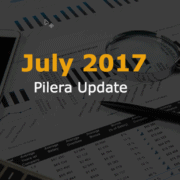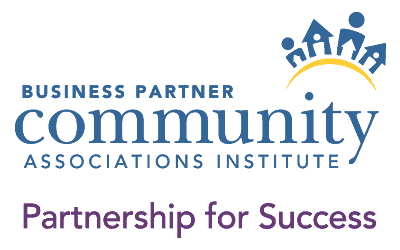Community Managers, Are You Prepared for Fall?
Yes, it’s that time of the year again! As we are one month away from the end of summer and the onset of fall, a manager has a lot to think about to prepare the community for the upcoming season. Here, we provide a checklist along with some tips that every manager can incorporate into their “fall prep to-do-list”. Read along, perform, and start crossing these activities off your checklist!
Inspect all common areas and equipment
Prepare a checklist of all the physical assets your management company owns and manages:
-
- Common area grounds – Inspect the streets (fix major potholes and gutters, enhance the pavement if necessary, remove trash, etc), parking spaces, sidewalks/cul de-sacs, courtyard/backyards, walking trails, and ponds/lakes.
- Central HVAC – Cooling systems are typically utilized up until September, however it depends on location and annual climate. Perform general maintenance for the HVAC system to prepare it for winterization.
- Furnace – Performing a routine maintenance of the furnace increases longevity of the equipment as it is an expensive investment.
- Pool – If your community has a pool, be prepared to close it, post Labor Day weekend. Conduct a final maintenance – filter out insects and other debris, remove old filters, drain the water, and seal the pool with a water-resistant cover.
- Other community amenities – Most likely, other common amenities would still be available for use during the fall and winter. Before your team becomes heavily occupied in other tasks, conduct an inspection on the clubhouse, gym, tennis/basketball courts, playgrounds, etc.
- Resident Units – Take a look at all the requests that come in from residents, organize them appropriately, and contact a vendor to resolve the issues.
Tip: Document each maintenance task and assign the task to yourself, a staff member, or a vendor. Most importantly, prioritizing each task helps you and staff members to keep ahead of deadlines and ensure accountability of each team member. Want to learn more on work order systems and how to streamline your work order process?
Want to learn more on work order systems and how to streamline your work order process? Check out our previous blog articles on work orders to give you a head start!
- 5 Best Practices to Enhance Your Work Order Lifecycle
- The Value of a Work Order Management Software for Your Team
Evaluate your vendor list
Now’s a great time to sift through your vendor list. Keep in mind the following throughout your assessment:
-
- All the maintenance tasks you have vendors assigned to – are there any types of maintenance tasks for which you do not have a contracted vendor for?
- Compile a list of potential contractors to fill the gaps of your community’s maintenance needs. Start the vetting process to identify vendor(s) whose capabilities will be a good fit for your community requirements. Ask another question to your team: Can some of your existing contractors fill in those gaps?
- Rate each vendor for:
- Promptness/timeliness – Do they resolve an issue or service request on time?
- Performance – Does their performance meet or exceed the standards?
- Customer service – Do they respond to your inquiries on time and respectfully? Are they helpful?
- Communication effectiveness – How well do they respond to your team on task acknowledgement, fulfilment or any delays? What methods do they use?
- Cost – How do they price their services, compare with other vendors, and are they cost effective?
- Insurance – You never want to have a maintenance worker appear at your community without the proper insurance. What types of insurance coverage(s) do they hold? Require that a copy of the Certificates of Insurance (COI) be submitted by each vendor.
Tip: When on-boarding new vendors, make sure that contractors are fully aware of community requirements and that both parties have agreed upon the fulfillment of duties. Have an internal employee or the company-appointed lawyer read through the contract carefully. If you are using an organized system to keep track of vendors, make sure to attach the contract and have it readily accessible to you and your team members.
Evaluate your insurance coverage and policies
Every management company requires a sufficient amount of insurance coverage to protect its business operations and recover from both tangible and intangible loss. Before each season starts, we recommend you review your current insurance coverage, rates, and premiums with your agent. As we are approaching fall and winter, make sure that your property insurance includes repairs and replacements for damage to building structure caused by snow storms. Typically, every property manager needs coverage for:
-
- Repair and replacement of structural investments – buildings, landscaping, and other physical assets.
- Loss in earnings in the event residents default on rent or assessments as a result of personal circumstances or disasters.
- Reputation or physical damage potentially caused by failure in staff performance or employee noncompliance.
- Legal costs that arise from any tenant discrimination lawsuits.
Tip: Evaluating any past situations can be an indication of how well your current insurance policies are panning out for your management company. Assess communication effectiveness of the insurance agent/company, responsiveness to emergencies, coverage included, policies, and cost savings for your company.
Improve your communication strategies
Take this opportunity to review your ongoing communication strategies from this year and last fall/winter. Evaluate:
- Were your communication strategies effective for reaching out to residents, board members, employees, and vendors on time? If not, then review all your stakeholders’ addresses, emails, and phone numbers. Check for accuracy.
- Do you have a communications strategy in place to relay all types of pertinent information to residents? For emergency situations, violations, or an invitation to a community event?
- Are you using a communications software? If yes, you should obtain communication delivery confirmations on who is receiving your message and who isn’t. Being proactive in identifying the best mode of communication for your stakeholders now helps you to respond quickly and without hesitation when any type of emergency situation arises.
Tip: Send an email through your communications platform to your residents or community members with a checklist of how they can prepare their homes for the fall season. Keep the list short and informative! The more informed residents are of the community association’s housekeeping rules, the easier it will be to manage service request workflows (and you’ll reduce the amount of violation emails too!)
Not sure where to start in analyzing your communication strategy or software? Check out our blog articles on the topic:
- Creating a Communications Plan for Managing Your Residential Community
- 5 Ways a Communication Software Can Benefit Your Community Management Company
Pilera is your all-in-one community management platform for managers, board members, and residents. Our web portal helps streamline and simplify communications, work orders, rule violations, and activity management processes. The Vendor Management platform, our newest offering in Pilera, provides managers with a simplified way to organize and track vendor information and their associations to communities and work order tasks. Learn more about Vendor Management as well as our other new features and enhancements in our latest release notes.










